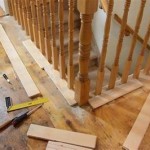Allure Vinyl Plank Flooring: A Comprehensive Review
Allure vinyl plank flooring has become a popular choice among homeowners and contractors alike, offering a combination of affordability, durability, and aesthetic appeal. Understanding the nuances of this flooring option is crucial for making informed decisions about its suitability for various spaces. This review delves into the different aspects of Allure vinyl plank flooring, exploring its construction, installation process, performance characteristics, and comparing it against competing products in the market.
Allure vinyl plank flooring is categorized as a type of resilient flooring, primarily composed of polyvinyl chloride (PVC) and various plasticizers, fillers, and stabilizers. These components contribute to its flexibility, water resistance, and overall durability. The flooring is typically structured in multiple layers: a wear layer on top, followed by a decorative layer that provides its visual appearance, a core layer for stability and thickness, and sometimes an attached underlayment for sound absorption and added comfort.
The wear layer, often measured in mils (thousandths of an inch), is a crucial determinant of the flooring’s resistance to scratches, scuffs, and stains. A thicker wear layer generally indicates better durability and suitability for high-traffic areas. Allure flooring offers a range of wear layer thicknesses, catering to both residential and light commercial applications. The decorative layer is generally a high-resolution print that mimics the look of natural materials like wood, stone, or tile. The core layer provides the structural integrity of the plank, preventing warping or bending, especially under varying temperature and humidity conditions.
Ease of Installation: Featuring the Click-Lock and GripStrip Systems
One of the primary selling points of Allure vinyl plank flooring is its ease of installation, particularly due to its innovative installation systems. Two main types of Allure flooring are available: click-lock and GripStrip. Click-lock systems typically feature interlocking edges that allow planks to be connected together without the need for adhesives. This "floating floor" installation method is relatively simple and requires minimal specialized tools. The planks are angled and clicked into place, creating a secure and seamless surface. This system is advantageous for DIY enthusiasts and allows for easy removal and replacement of individual planks if necessary.
GripStrip, on the other hand, utilizes a self-adhesive system. Each plank has adhesive strips along the edges that bond to adjacent planks when pressed together. This method is also considered relatively easy, but requires careful alignment and placement to avoid gaps or uneven surfaces. While the GripStrip system is generally simpler than traditional glue-down methods, it may be less forgiving of imperfections in the subfloor. Proper preparation of the subfloor, ensuring it is clean, level, and dry, is essential for both click-lock and GripStrip installations.
Regardless of the chosen installation method, some basic tools are generally required, including a utility knife or scoring tool for cutting planks, a measuring tape for accurate layout, a straight edge for precise cuts, and a tapping block (for click-lock) or a hand roller (for GripStrip) to ensure proper adhesion. Specific installation instructions will vary depending on the particular Allure flooring product and the manufacturer's recommendations should always be followed closely.
Durability and Maintenance: Performance in Real-World Conditions
The durability of Allure vinyl plank flooring is a significant factor in its widespread appeal. Its resistance to water, scratches, and stains makes it a suitable option for various environments, including kitchens, bathrooms, and basements. However, the specific performance characteristics depend on the wear layer thickness and the overall quality of the product. Floors with thicker wear layers are better equipped to withstand heavy foot traffic, pet scratches, and the impact of dropped objects.
Allure flooring is inherently waterproof, meaning it will not be damaged by spills or moisture exposure. This contrasts with hardwood flooring, which is susceptible to water damage and warping. However, it is important to note that while the flooring itself is waterproof, proper installation is still crucial to prevent water from seeping underneath the planks and causing issues with the subfloor. Addressing spills promptly is also recommended to prevent potential staining or discoloration, although the flooring is generally stain-resistant.
Maintenance of Allure vinyl plank flooring is relatively straightforward. Regular sweeping or vacuuming is sufficient to remove dirt and debris. For more thorough cleaning, a damp mop with a mild detergent suitable for vinyl flooring can be used. Harsh chemicals, abrasive cleaners, and scouring pads should be avoided, as they can damage the wear layer and dull the finish. Periodic cleaning with a specialized vinyl floor cleaner can help to maintain the flooring's shine and protect it from scuffs and scratches. Furniture pads placed under heavy furniture can also help to prevent indentation and scratches.
Aesthetic Versatility: Mimicking Natural Materials
Allure vinyl plank flooring offers a wide range of aesthetic options, allowing homeowners to achieve the look of natural wood, stone, or tile without the associated cost and maintenance. The decorative layer of the flooring utilizes advanced printing technology to create realistic textures and patterns. A wide variety of wood-look planks are available, mimicking different wood species, grain patterns, and finishes, from rustic and distressed to sleek and modern. Stone-look options replicate the appearance of marble, slate, travertine, and other natural stones, providing a sophisticated and durable alternative.
The variety of colors, sizes, and plank formats further enhances the design flexibility of Allure flooring. Planks are available in different widths and lengths, allowing for customization and the creation of unique flooring patterns. Some Allure products also feature embossed-in-register (EIR) technology, which aligns the texture with the printed design to create a more realistic look and feel. For example, a wood-look plank with EIR will have a textured surface that corresponds to the wood grain pattern, enhancing the authenticity of the flooring.
The aesthetic appeal of Allure flooring is further enhanced by the tight seams created by the click-lock or GripStrip installation methods. These seams minimize the visibility of the joints between planks, creating a seamless and visually appealing surface. The overall effect is a flooring that closely resembles natural materials, adding value and enhancing the aesthetic of any room.
When choosing Allure vinyl plank flooring, consider the overall design style of the space, the lighting conditions, and the color scheme of the existing furniture and décor. Samples of different Allure flooring products should be viewed in the actual room to ensure that the color and texture complement the surrounding elements. Also consider lighting, both natural and artificial, as the flooring appearance can change drastically depending on the light source.
The thickness of the plank is an important consideration. Thicker planks generally feel more substantial underfoot and can help to reduce noise transmission. Thicker planks also tend to be more durable and resistant to damage. If the flooring is being installed over a concrete slab, a vapor barrier may be required to prevent moisture from seeping up through the concrete and damaging the flooring. In cases where the subfloor is uneven, self-leveling compound may be necessary to create a smooth and level surface before installing the flooring.
Proper acclimation of the flooring is also crucial for ensuring a successful installation. Allure vinyl plank flooring should be allowed to acclimate to the room temperature for at least 48 hours before installation. This allows the planks to expand or contract to the room's climate, preventing gaps or buckling after installation. The recommended temperature range for acclimation is typically between 65°F and 85°F (18°C and 29°C). Failure to properly acclimate the flooring can result in installation problems and long-term performance issues.

Trafficmaster Allure Vinyl Plank Reviews And S 2024

Trafficmaster Allure Vinyl Plank Reviews And S 2024

Allure Redlands 6 Mil X 7 In W 48 L Lock Waterproof Luxury Vinyl Plank Flooring 23 3 Sqft Case S131301 The Home Depot

Reviews For Allure Platinum Caramel Pine 6 Mil X 7 In W 48 L Lock Waterproof Luxury Vinyl Plank Flooring 23 3 Sqft Case Pg 4 The Home Depot

Allure Wellton 6 Mil X 7 In W 48 L Lock Waterproof Luxury Vinyl Plank Flooring 23 3 Sqft Case S132010 The Home Depot

Allure Flooring Review All The Facts You Need To Know About

Reviews For Allure Platinum Caramel Pine 6 Mil X 7 In W 48 L Lock Waterproof Luxury Vinyl Plank Flooring 23 3 Sqft Case Pg 4 The Home Depot

Trafficmaster Allure Vinyl Plank Reviews And S 2024

Allure Covino 6 Mil X 7 In W 48 L Lock Waterproof Luxury Vinyl Plank Flooring 23 3 Sqft Case S134201 The Home Depot

How To Install Vinyl Plank Flooring Allure Gripstrip
Related Posts








